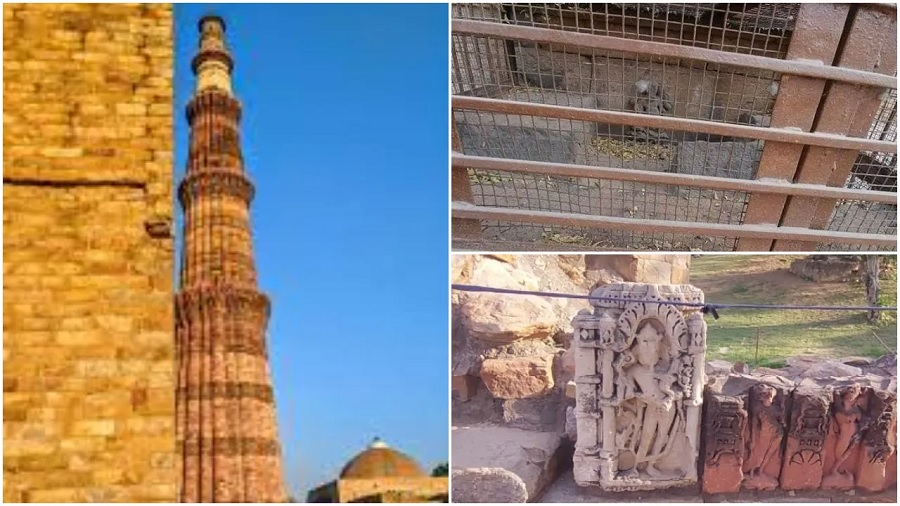
Claiming that the placement of two Ganesha idols in Qutub Minar complex is “disrespectful”, the National Monuments Authority (NMA) has asked the Archaeological Survey of India (ASI) to move them to the National Museum, reported the Indian Express. But what exactly is “disrespectful”, you ask?
“These idols were taken, apart from those of Jain Tirthankaras and Yamuna, Dashavatar, Navagrahas, after demolishing 27 Jain and Hindu temples built by King Anangpal Tomar… The way these idols have been placed is a mark of contempt for India, and needs correction,” NMA Chief and former Rajya Sabha BJP MP Tarun Vijay told Indian Express.
According to Vijay, he found during several visits that the idols come near the feet of mosque visitors, something he finds “disrespectful”. Therefore, the NMA wrote to the ASI last month stating that the idols should be given a “respectable” place at the National Museum that displays antiquities such as the “Ulta Ganesh” and “Ganesha in cage”.
While it is true that the complex was built after the destruction of 27 Jain and Hindu temples, the feeling of “disrespect” appears to be just Vijay’s opinion and does not have any grounds in history. According to a December 11, 2020 Times of India article, historian Dr Swapna Liddle said Hindu imagery was not uncommon in Muslim monuments, even before Mughal armies reached Delhi. Add to that the complex was built during some of the earliest interactions between the two communities when people were only beginning to learn of other cultures, there is no evidence of contempt or disrespect as claimed by Vijay.
The NMA Chief also compared the removal of the statues from the complex to the removal of King George V’s statue from its place near India Gate. Vijay said such statues and names were removed to erase marks of colonialism. Accordingly, the relocation of Ganesha idols to the National Museum will “reverse the cultural genocide that Hindus faced at the hands of Mughal rulers,” he said.
However, the statue of King George V that Vijay refers to was installed in the autumn of 1936 when the Indian independence movement was only gaining strength. The British ruler’s statue was damaged and draped in black cloth bearing the words “Death to the Tyrant” around January 1943. The statue was eventually moved due to political pressure but the canopy and pedestal on which it stood remains intact. Meanwhile, the Ganesha idols in question are parts of the Quwwat Ul Islam mosque’s walls. The entire compound was declared a World Heritage site by UNESCO in 1993 and given to the ASI.
Incidentally, both NMA and ASI operate under the Union Ministry of Culture. However, ASI has declined to comment on the whole issue.
Related:
Kashi Vishwanath – Gyanvapi case a national dispute: Deity’s next friend to HC
Gyan Vapi case: Allahabad HC stays ASI survey, proceedings before lower court